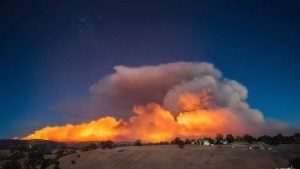As temperatures in some locations across Australia peaked well above 40C and record-breaking temperatures recorded in some areas in Sydney over the past week, authorities warned of catastrophic bushfire conditions. It only takes a moment for a bushfire to start, especially when plants and trees are dry. High winds and hot summer air fuel the flames.

Once the fire is out and emergency crews declare the area safe to return, it’s time to assess the damage.
If your area is prone to wildfires, pay attention to local emergency management authorities; if they order an evacuation, don’t stay behind to try to save your home or business. Stay safe and leave fire fighting to the professionals.
If your home or business is damaged in a wildfire, follow this plan:
Day 1: Assess Fire Damage
Once the fire is out and emergency crews declare the area safe to return, it’s time to assess the damage. This can be a difficult process, especially if the destruction was widespread. The good news is that you don’t have to go through this step alone. Call a reputable fire damage restoration professional like Biohazard Cleaning Australia before you return to the site. Our technicians are experienced and will accompany you to help assess the situation and halt residual damage.
Pay special attention to the roof and ceiling crawl spaces. Sparks or embers can land there and reignite hours later. If possible, use a garden hose to soak the roof and surrounding area. This will reduce the risk of flare-ups and dampen loose ash and dust.
Week 1: Begin Fire Restoration Process
Soot, ash, and water can be just as destructive as the flames themselves. Your fire damage restoration team will start by cleaning and drying the area and inspecting the building for structural damage. Depending on the extent of the damage, the team will inventory your belongings and pack them for off-site cleaning where possible.
During this process, you will need to secure alternative housing. Your homeowners’ insurance agent local government authorities can assist you.
Year 1: Prevent Further Damage
Take the opportunity to re-think your landscaping during the restoration process. Establish defensible space around your home by keeping grass short and moving shrubs, trees, and bushes away from the structure. Choose fire-resistant plants and space them several feet apart to reduce the risk of flames leaping from one to the next.

